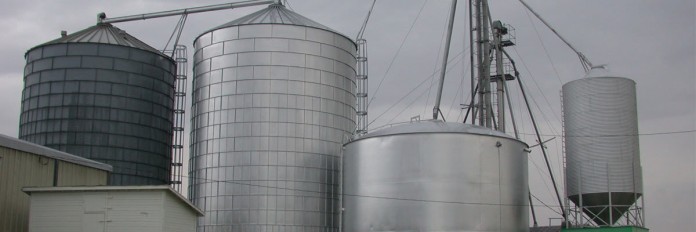UNIVERSITY PARK, Pa. — Too often, when first responders arrive on the scene of a farm-related emergency, they don’t have the proper knowledge, training, personnel or equipment to manage the situation.
Even in rural communities, many emergency service personnel are not familiar with farm issues, according to Davis Hill, manager of Penn State Extension‘s Managing Agricultural Emergencies program.
Emergency responders need preparation
As an example, he cited a real situation that occurred last year, when farm employee was unloading corn from a bin. The grain was not flowing properly from the auger, and the employee suspected that there was clumping and bridging occurring. This happens on occasion, and the normal solution is to enter the bin to break up the clumps.
“Right or wrong, they do this with the auger running, and this practice always has been successful at getting the grain to flow normally again,” Hill said. “So the employee entered while his employer watched from the top-entry hatch. When the employee fell into a cavity up to his waist, the employer immediately shut off the power to the unloading auger.”
Being entrapped to the waist, the employee needed help to get out. After several unsuccessful rescue attempts, the employer called 911.
“When emergency responders arrived, they had no experience with grain bins, flowing grain or grain bin rescue,” Hill said. “At one point there were 25 responders inside this bin attempting to move grain away from the employee. It took more than five hours to free him.”
Compare that scenario to a similar event that occurred on another farm, where an employee was entrapped and the employer and other workers attempted to rescue him before calling 911. But this time the responders knew what to do — they had pre-planned this farm, so proper resources were called in. As a result, the employee was released from the entrapment and was out of the bin in just over an hour. And only eight emergency responders were needed on the scene, with only two going into the bin.
“Farms have many hazards that can cause serious injuries and deaths and other catastrophic emergencies,” Hill said. “As a farm operator, you don’t often ask for help, especially from people who are not farmers or agribusiness people. When farm emergencies happen, however, you really need to know that those who are coming to manage the crises are prepared to do the right things to save lives and preserve property.”
Emergency action plan
To achieve this, farm owners should develop an emergency action plan, or “pre-plan,” that can help emergency responders make quick decisions and act to rescue a farm employee or family member at risk, keep responders and bystanders safe, and protect property.
If considerable time must be spent at the incident scene trying to understand the hazards, this is precious time that will not be spent on rescuing the person or property that is in danger, Hill noted.
A farm emergency action plan or pre-plan will save this valuable time. Hill urges farm owners to take these important steps to help their local emergency responders develop a pre-plan:
- Download an aerial map of your farm. Try to fit all of the buildings and structures on this map. Multiple pages are acceptable. On the map, number each building and number each structure, such as silos, bins and tanks.
- On a separate sheet, develop a key for certain points that you will write on the map. For example, mark on each building with an “E” where the main electric shutoff for that building would be located. On the separate sheet, write down what “E” stands for. Do the same for gas (letter “G”). A letter “P” might stand for pesticides.
- On the separate sheet, identify what each building and structure is. For example, building 1 might be the main dairy with 120 milking cows. Building 2 might be the heifer barn. Structure 3 might be a 60,000-bushel grain bin. Be sure to identify where the pesticides and fertilizers are stored.
- List names and contact information for the principal owners and managers of the farm business, including how they can be reached at any time of the day or night.
Prepare to manage
“Once you have collected this information, contact your local fire chief and invite him or her out to your farm to prepare to respond for various emergencies, and ask him or her to conduct an emergency pre-plan for your farm,” Hill said.
“Show them what you have developed. A good fire company chief officer will take this information and expand on it. Ideally, three or four key personnel will come to tour your farm to gain a better understanding of where things are, where employees and family members will be located and how they should handle various emergencies.”
Preparing to manage emergencies on the farm may seem like a daunting task, but if you follow these steps, the basics of a farm emergency pre-plan will begin to take shape. When you need help, Hill said, you want to be sure that arriving personnel have the basic background to help you efficiently.
More information is available at the Penn State Extension Agricultural Safety and Health website.
Related:
- How to create a farm safety plan Feb. 12, 2016
- Let’s all practice farm safety Nov. 11, 2014
- Thinking ahead for silage safety Aug. 21, 2014
- Mercer County: Safety first, farm work second July 15, 2014
- Farm safety expert urges precautions to limit skid-steer accidents March 14, 2012













i found this article of great interest and relevance
as a commercial lawyer that has an strong interest and focus in legal risk, the article provided me with an insight into emergency management and continuity planning
in fact, one of our lawyers comes from a farming background and is developing her own niche in agri-farming business and she too found this article important for her family and her practice
thank you
jay n. rosenblatt